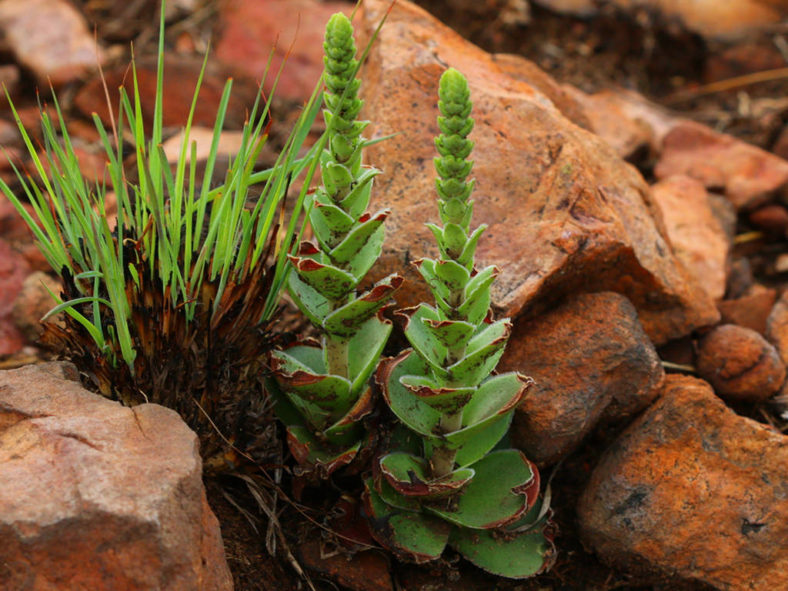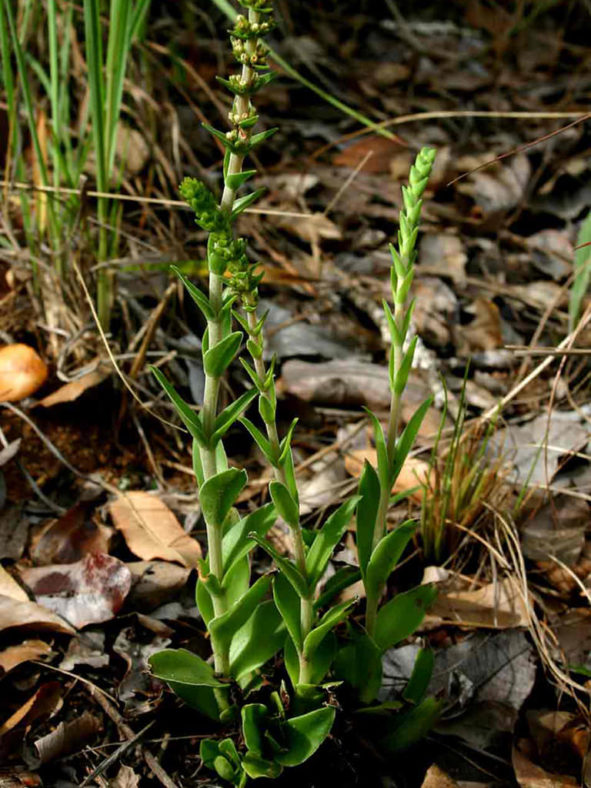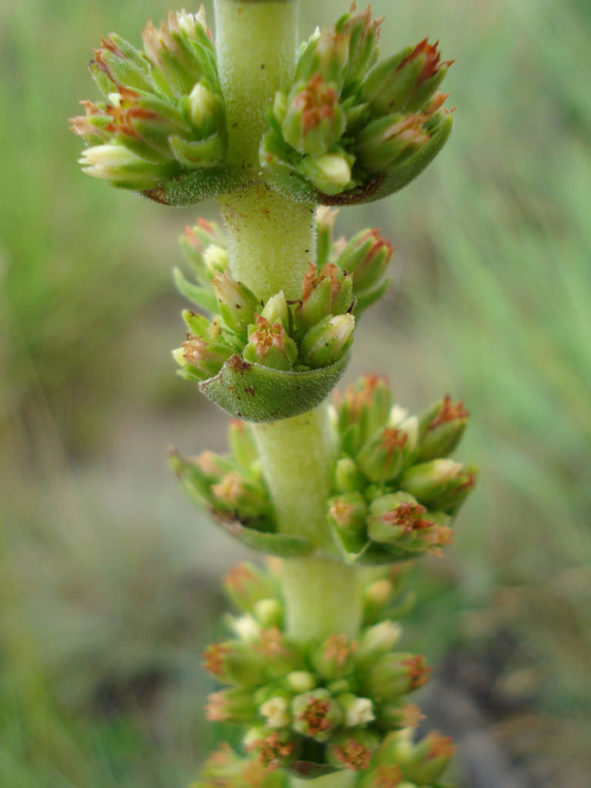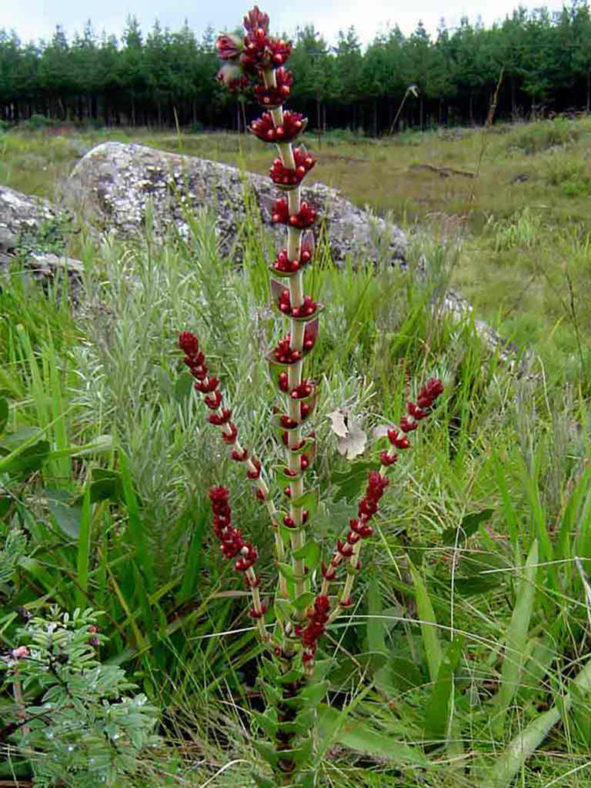Scientific Name
Crassula capitella subsp. nodulosa (Schönland) Toelken
Synonym(s)
Crassula nodulosa
Scientific Classification
Family: Crassulaceae
Subfamily: Crassuloideae
Genus: Crassula
Etymology
The subspecific epithet "nodulosa (nod-yoo-LOH-suh)" means "having small nodes or knots" and refers to the texture of the stems.
Origin
Crassula capitella subsp. nodulosa is native to Botswana, Namibia, South Africa, and Zimbabwe. It grows in grassland, usually on gravelly slopes or in depressions.
Description
Crassula capitella subsp. nodulosa, also known as Crassula nodulosa, is a perennial, rarely biennial succulent with a usually solitary rosette and an erect, unbranched stem that grows from a tuberous root. The leaves near the base of the rosette are egg-shaped with a narrow end at the base, pointed, and tightly packed, measuring up to 2.4 inches (6 cm) long and 1.4 inches (3.5 cm) wide. The leaves along the stem are smaller and more pointed than the basal ones. They gradually get smaller and change into floral bracts as the stem forms a pointed inflorescence that can reach up to 32 inches (80 cm) in length. The stem, leaves, and sepals are all covered with short, recurved hairs.
The flowers are white or reddish, 5-lobed, and appear in clusters in the leaf axils from summer to fall.

How to Grow and Care for Crassula capitella subsp. nodulosa
Light: C. capitella subsp. nodulosa prefers full sun to partial shade. However, intense afternoon sun in the hottest period of summer can burn the leaves of the plant. A place with morning sun and afternoon shade would be perfect. Indoors, place your plants in a window where they receive at least 6 hours of direct sunlight.
Soil: This plant is not particular about soil pH but requires very porous soil with excellent drainage. Use commercial potting soil mixes designated for use with succulents, or mix your own.
Hardiness: Like most Crassulas, this succulent will tolerate short-term freezing, but extremes of cold or heat will cause it to lose leaves and die. C. capitella subsp. nodulosa can withstand temperatures as low as 25 to 50 °F (-3.9 to 10 °C), USDA hardiness zones 9b to 11b.
Watering: Avoid overwatering using the "soak and dry" method, where the soil is soaked with water, slowly drained, and left to dry out before watering again. Reduce watering in winter. Potted plants require more frequent watering than those in the ground.
Fertilizing: C. capitella subsp. nodulosa does not need much feeding but will benefit from a small amount of organic fertilizer when it starts actively growing in mid-spring.
Repotting: Repot as needed, preferably in spring, at the beginning of the active growth period. Make sure the soil is dry before you begin repotting.
Propagation: This succulent is generally started by leaves or stem cuttings. It can also be grown from seeds and offsets. The easiest way is to propagate C. capitella subsp. nodulosa from a single leaf, while using stem cuttings is the fastest way to get a decent-sized plant. These processes are most successful at the beginning of the active growth period. Sow the seeds in the spring or summer. Propagating by dividing offsets is easy because the parent plant has already done most of the work for you.
Learn more at How to Grow and Care for Crassula.
Toxicity of Crassula capitella subsp. nodulosa
C. capitella subsp. nodulosa is nontoxic to people and pets.
Links
- Back to genus Crassula
- Succupedia: Browse succulents by Scientific Name, Common Name, Genus, Family, USDA Hardiness Zone, Origin, or cacti by Genus
Photo Gallery
Click on a photo to see a larger version.


